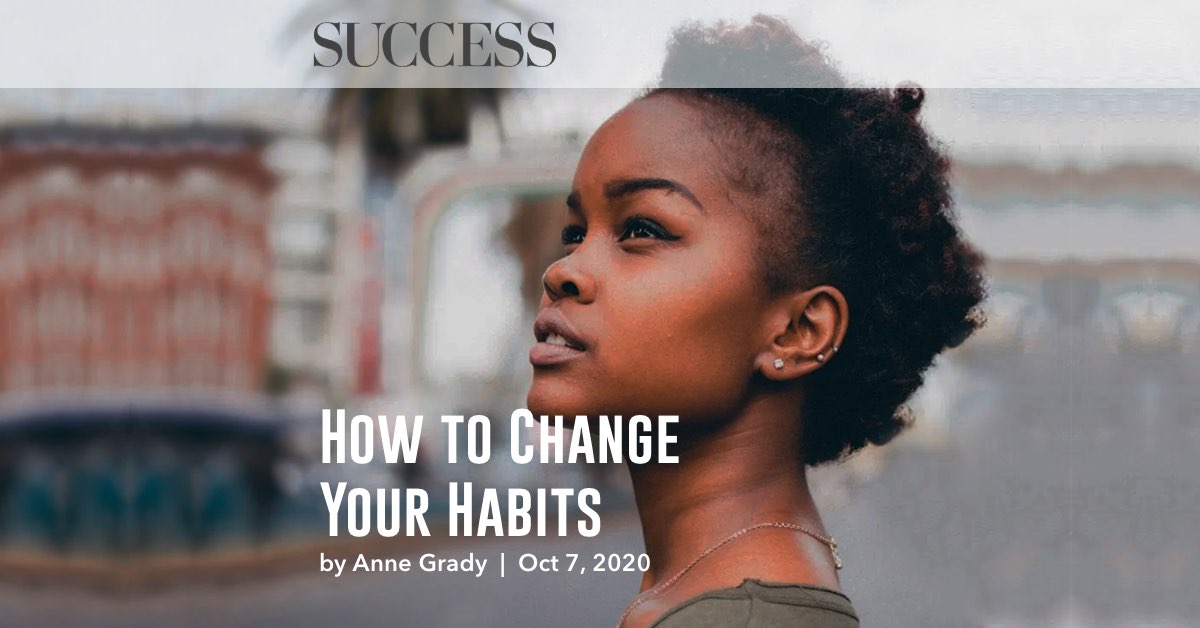This article originally appeared on SUCCESS.com
10/07/2020
The content is replicated below for archival purposes only. We’re extremely grateful to SUCCESS.com for the opportunity to contribute. Please do visit their web site to read this article if possible.
Get to Know Your Habits
The Greek lyrical poet Archilochus once said, “We don’t rise to the level of our expectations, we fall to the level of our training.” Take that a step further. You don’t rise to the level of your intentions, you fall to the level of your habits.
When you are stressed, tired, or under pressure, you are more likely to fall back on habitual patterns of thinking and behaving. But do those habits serve you? Will they help you create the life you want?
Your brain loves habits because it doesn’t have to work as hard. Even negative habits are more comfortable than new ones. Once you start recognizing patterns, you can make intentional choices about the habits you choose to maintain and adopt. This is the basis of my Mind Over Moment strategy.
A habit is something that once required conscious effort but has become automatic. It turns out, a large portion of what you do each day is a habit. In fact, more than 45 percent of what you do every single day is a habit.Your brain depends on these cognitive shortcuts to conserve energy. If you have ever driven home on autopilot because you were deep in thought, you were operating out of habit.
You live almost half your life on autopilot. If you are not careful, you can become a slave to your habits, and they can become a way to live life unconsciously, rather than deliberately choosing what you want and creating a path to get there.
Habits can be super helpful. After all, if you had to think really hard about putting on shoes, eating, taking a shower, or getting dressed, you would be exhausted by 9:00 am. Your habits allow you to conserve mental energy.
Have you ever been to the grocery store after they have rearranged the shelves? For the love of Pete, where’d they put the peanut butter? Why is it so exhausting hunting for items you used to know were on aisle 11? Even without realizing it, when you plan your trip to the store, you visualize what you need in each of the aisles because you know where things are. Your brain has a map, basically a neural network that gets more deeply etched the more you think or do something. This makes it much easier to think or do the things you have always thought and done.
Unfortunately, your brain doesn’t know the difference between a good habit and a bad habit. It doesn’t know the difference between being anxious, worried, and fearful or optimistic, excited, and grateful. It doesn’t know the difference between getting home from work and drinking a bottle of wine or going to the gym. Your brain just takes anything you repeatedly think, say, or do, and converts it into a habit.
Take a second to try something. Cross your arms like you are cold or angry. Now cross them in the opposite direction. Which way feels more awkward? When you crossed your arms the first time, the signal came from your limbic system. It’s a habit—you’ve done it a million times, and you didn’t even have to think about it. The second time you crossed your arms, the signal came from your prefrontal cortex. It was probably a little odd, clunky, and uncomfortable, and you had to think about it. If you practice crossing your arms in that direction regularly, eventually that will become a habit too.
Building resilience requires that you be deliberate about your habits. It means you must challenge your automatic thoughts and behaviors, and that is hard work. When it comes to your life, personally and professionally, what habits are supporting your success, and which habits are sabotaging it?
There is no timetable for habit change. Your neuropathways have been carved deeply, and it takes repetitive, consistent change to build new neuropathways. And just because you develop a new neuropathway does not mean old ones are erased—which means it’s easy to slip back into old habit patterns.
Think of your brain like a field full of grass. You can walk through the field, but the grass will still pop back up. You may have to walk in the exact place a hundred times before a pathway is carved. And just because you carve new pathways doesn’t mean the old ones aren’t still well-worn and comfortable. Old bumpy paths that we know can be more comfortable than the smooth ones we don’t. To change habit patterns, you have to be willing to get comfortable being uncomfortable.

Anne Grady is a Speaker, Author, and #TruthBomb Dropper.
Anne shares practical strategies that can be applied both personally and professionally to improve relationships, navigate change, and triumph over adversity. And she’ll make you laugh while she does it. Anne is a two time TEDx speaker, and her work has been featured in numerous media outlets, including Harvard Business Review, Entrepreneur, Forbes, Fast Company and Inc. magazines, CNN, ESPN, and FOX Business. She is the best selling author of 52 Strategies for Life, Love & Work and Strong Enough: Choosing Courage, Resilience and Triumph.

